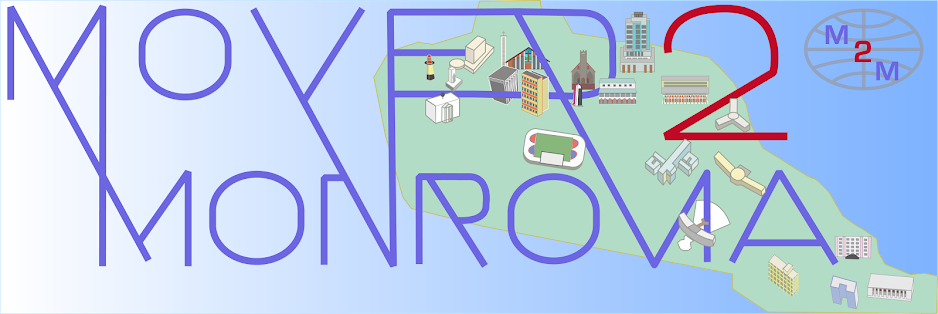
The beach at 15th Street, Sinkor.
This is especially true of Sinkor, the mid-section of the city that has been my home for most of the last four years. Mostly laid out in a grid pattern with numbered cross-streets, Sinkor straddles the narrow center of the peninsula, with a "swamp side" to the north of Tubman Boulevard, toward the marshy meander of the Mesurado river, and the "beach side" to the south, facing the ocean.

16th Street, Sinkor.
While both are quiet and upscale residential neighborhoods, home to many of the city's embassies, it is the oceanside section which has been Monrovia's leafiest and most affluent area for decades. Originally elite families built stately mansions here on the square city lots, just blocks from the beach. Several of these are some of the last buildings in the city still inhabited by squatters and un-rehabilitated. A greater number of these are now high-walled NGO headquarters, and an increasing number have been given over to the Ellen-era building boom: there are now a half-dozen recently-completed multistory apartment tower complexes in the area, with another four or five under construction, as developers rush to finish out apartments that rent out for Manhattan-rate prices.
12th Street, Sinkor.
In the past few months, it is not just the walls of these concrete constructions that have been bricked up: the quiet, sandy ends of several of Sinkor's little streets, some of which are still pot-holed (or even never paved in the first place) have been closed off with cinderblock.

9th Street, Sinkor.
This is apparently the solution decided upon to impede access to the beach by people who mine beach sand for construction, although this continues to go on unabated just in other sections of the city, and I've also been informed that this is to restrict those who would use it as either a toilet, or rubbish bin, or both. Never mind that the much less-affluent majority of the city's residents resort to using the beach as a bathroom out of desperate necessity, and that maybe the beach could be better tended if people were employed to take care of it, rather than have some governmental authority restrict public access to a common amenity.

A sign at 18th Street proclaims "Sinkor Beach Patrol"
but gives no indication that this an actual, acting body,
merely imploring the public to keep the beach clean for children.
There is also the question of safety, as wanderers can also find themselves locked on the beach, which doesn't sound helpful if you encounter someone unfriendly. It has also had the predictable effect that the metal doors in these walls are now guarded by young men who attempt to charge others for access, which may or may not have been anticipated when this project was thought up.
I imagine it also occurred to no one that one of this often very harsh and ugly city's few moments of serenity and beauty, the vistas down its streets to the ocean, was being lost, and replaced by yet more hideous concrete block.


No comments:
Post a Comment